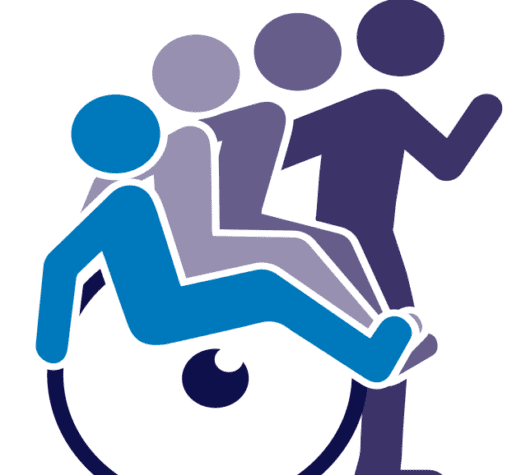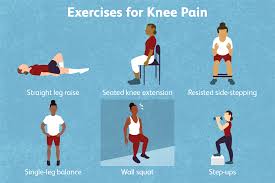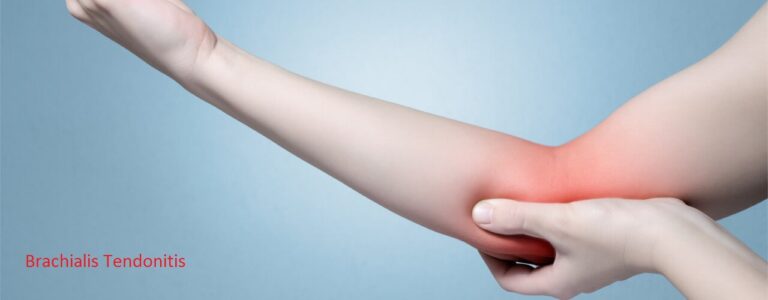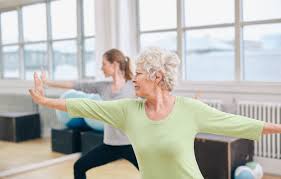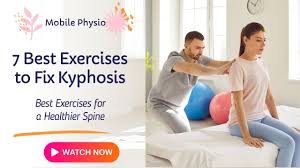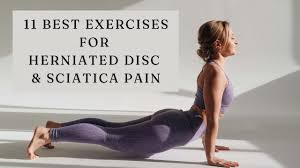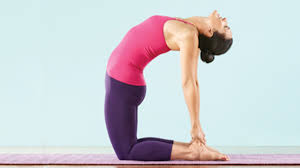13 Best Exercise For Knee Pain
Table of Contents
Introduction:
People of all ages can have knee pain, which is frequently caused by injuries, arthritis, overuse, or muscular weakness. One of the best strategies to reduce pain, increase range of motion, and strengthen the muscles supporting the knee joint is to engage in regular exercise.
The most effective knee pain exercises are safe, low-impact, and made to strengthen, stretch, and stabilize the joint without putting undue strain on the knees.
Benefits of Best Exercise For Knee Pain:
Besides simply relieving pain, the greatest knee workouts have several other advantages. By strengthening the muscles that surround the knee joint, they provide stability and support while lessening the load on the injured region. Frequent activity also increases range of motion and flexibility, which facilitates pain-free and stiff performance of daily tasks.
These exercises improve balance to reduce the likelihood of falls or further injuries, and they increase blood circulation, which aids in recovery. Furthermore, by helping with weight management and enhancing general mobility, knee-friendly workouts can help avoid further knee issues in addition to relieving current pain.
Best Exercise For Knee Pain:
Straight Leg Raises:
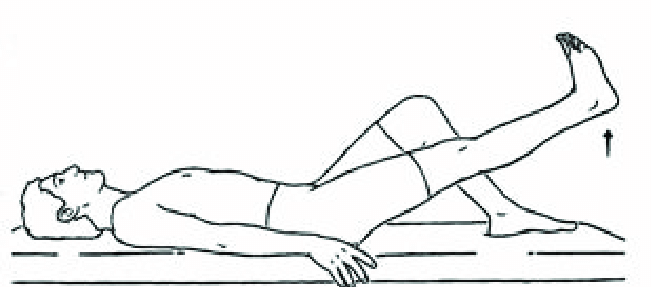
A straightforward yet incredibly powerful exercise for building quadriceps strength without overtaxing the knee joint is the straight leg lift. This exercise involves lying on your back with one leg straight and the other bent.
Controllably drop the straight leg back down after slowly raising it to the level of the bent knee and holding it there for a little while. This exercise is particularly helpful for those with knee pain or recovering from an injury because it strengthens the thigh muscles, which are essential for supporting and stabilizing the knee.
Quadriceps Sets:
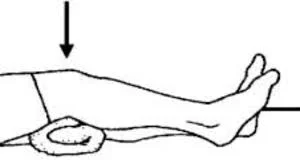
For those who have knee pain, quadriceps sets are a great moderate isometric exercise that helps build and activate the thigh muscles without causing any movement in the knee joint. Sit or lie down with your leg relaxed and straight to perform this exercise.
Gently push the back of your knee onto the floor or bed to tighten the muscles in the front of your thigh. Hold the contraction for five to ten seconds, then let it go. Repeating this exercise strengthens the quadriceps, eases stiffness, and improves knee joint support, all of which can lessen pain and increase stability.
Glute Bridges:
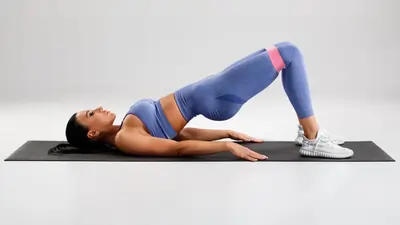
A great exercise for strengthening the glutes, hamstrings, and core muscles—all of which are crucial for knee support—is the glute bridge. This exercise involves lying on your back with your feet flat on the floor, hip-width apart, and your knees bent. To make your body create a straight line from your shoulders to your knees, push through your heels and raise your hips.
After a few seconds of holding the pose, carefully drop your hips again. By strengthening and stabilizing the lower body, this exercise not only improves posture and general mobility but also lessens knee pain.
Hamstring Curls:
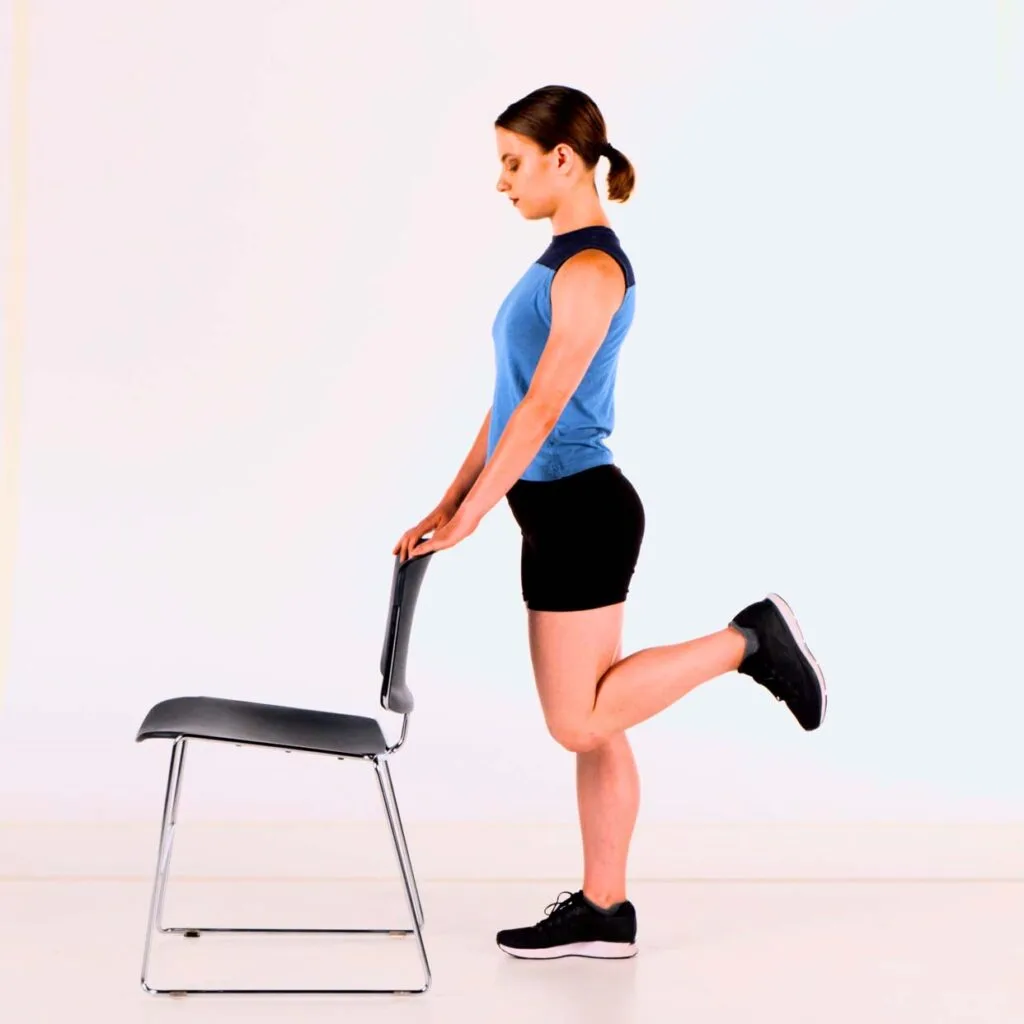
Exercises that strengthen the muscles at the back of your thighs, known as hamstring curls, are essential for maintaining knee stability. This exercise involves standing and balancing on a chair or wall, then bending one knee gently to bring the heel as close to your buttocks as is comfortable.
After a few seconds of holding the pose, carefully drop your leg back down. This exercise promotes smoother, pain-free mobility in daily tasks, strengthens the hamstrings, and lessens knee joint stress.
Step-Ups:

Step-ups are a functional workout that supports healthy knees by strengthening the quadriceps, glutes, and hamstrings while also enhancing stability and balance. Step-ups are performed by placing one foot on a stable step or platform while standing in front of it.
Step back down softly after pushing through that foot to raise your torso and get the other foot onto the step. By encouraging improved joint alignment and control, this exercise improves lower-body strength, lessens knee strain, and simulates commonplace actions like ascending stairs. It also helps avoid accidents.
Calf Raises:
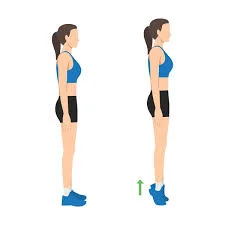
A straightforward yet powerful exercise that develops the calf muscles—which support the knees and provide lower-body stability—is the calf raise. Stand with your feet hip-width apart and use a chair or wall for balance if necessary to complete this exercise.
Elevate your heels as high as you can while slowly rising onto the balls of your feet, then controllably bring them back down. Frequent calf raise exercises improve balance and mobility during daily activities like walking or climbing stairs, increase ankle and knee stability, and lessen knee joint tension.
Clamshells:
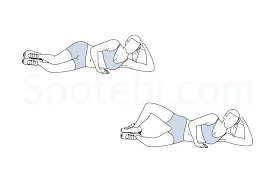
An exercise called clamshells works the hip abductors and glute muscles, which are important for knee stability and pain relief. Clamshells are performed by lying on your side with your feet together and your knees bent at a 90-degree angle. Raise the upper knee as high as you can without turning your hips while keeping your feet touching, then gently bring it back down.
By giving the knee joint more support, this exercise helps to minimize strain or injury, strengthens the glutes and outer hips, and enhances knee alignment while moving.
Side-Lying Leg Lifts:
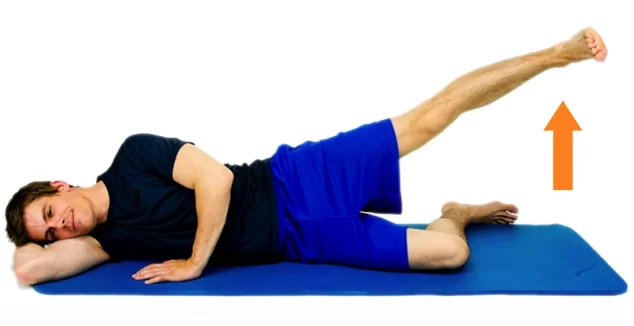
The hip abductors and outer thigh muscles, which support and stabilize the knees, can be strengthened using side-lying leg raises. To do this exercise, stack your legs on top of one another while lying on one side. Raise the upper leg as high as it feels comfortable, keep it there for a second, and then carefully bring it back down.
Regularly performing side-lying leg lifts strengthens and stabilizes the lower body generally, improves hip and knee alignment, and lessens knee joint stress.
Calf Stretch:
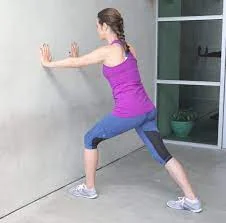
A mild exercise that helps increase Achilles tendon and calf muscle flexibility and lessen knee pain is the calf stretch. With both heels on the floor, stand facing a wall with one foot forward and the other back to complete this stretch. To feel a stretch in the rear leg’s calf, bend the front knee slightly while maintaining a straight back leg.
After 20 to 30 seconds of holding the pose, switch legs. Frequent calf stretches promote healthy knee alignment, reduce stress, and increase lower-leg mobility, all of which can help avoid knee pain.
Seated Leg Extensions:

The quadriceps muscles, which are essential for supporting the knee joint, may be strengthened by seated leg extensions. Sit on a stable chair with your feet flat on the floor and your back straight to complete this exercise.
Extend one leg slowly in front of you, keep it there for a few seconds, and then carefully drop it back down. This exercise increases knee stability, eases pain, and makes it easier to carry out daily tasks like walking, climbing stairs, and getting out of a seated posture.
Standing Hamstring Stretch:
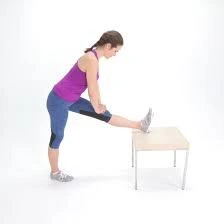
Stretches for the hamstrings while standing are a mild workout that increases thigh flexibility, which lessens knee pain. Standing erect, position one leg slightly forward of the other with the toes pointed upward and the heel on the floor to complete this stretch.
Hinge forward at the hips while maintaining a straight back until you get a stretch at the back of your thigh. After 20 to 30 seconds of holding the pose, switch legs. Frequent use of this stretch promotes healthy knee alignment, increases hamstring flexibility, and may ease knee pain.
Quadriceps stretch:
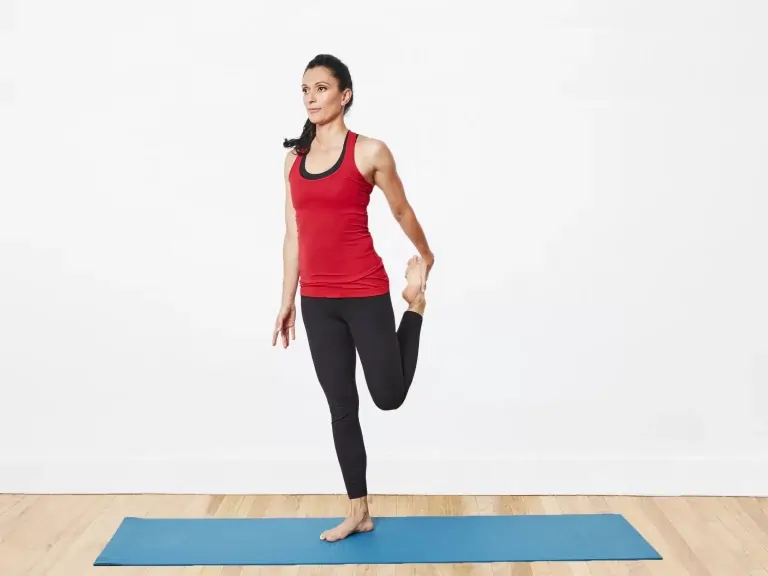
Stretches for the quadriceps are a good way to increase frontal thigh flexibility, which eases knee joint pressure. Stand up straight and use a chair or wall for balance if necessary to complete this stretch. Holding your ankle with your hand, bend one knee and push your heel toward your buttocks.
Hold the stretch for 20 to 30 seconds with your back straight and your knees close together, then swap legs. Frequent quadriceps stretches promote healthy knee alignment, ease stress, lessen knee pain, and increase lower-body mobility in general.
Half squat:
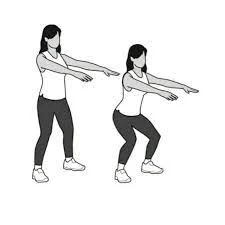
A knee-friendly exercise that reduces strain on the knee joint and tones the quadriceps, glutes, and hamstrings is the half squat. Standing with your feet shoulder-width apart, slowly bend your knees until your hips are only halfway down, as though you were sitting in a chair, to complete a half squat.
To go back to the beginning posture, push through your heels while maintaining a straight back and an elevated chest. Frequent half-squats strengthen the lower body, maintain knee stability, and improve functional motions, including walking, climbing stairs, and getting out of a seated posture.
Conclusion:
Adding specific workouts for knee pain can greatly increase the knee joint’s strength, flexibility, and stability. People can lessen pain, stop more injuries, and improve general mobility by routinely doing exercises, including calf stretches, glute bridges, hamstring curls, and straight leg lifts.
These exercises are crucial for properly treating and avoiding knee pain since they not only support the knees but also improve balance and functional mobility in day-to-day activities.
FAQs
For acute injuries, the RICE approach (Rest, Ice, Compression, and Elevation) is the quickest at-home treatment for reducing pain and swelling in the knee. Heat treatment can relax muscles for instant pain relief from stiffness, while topical ointments containing menthol or capsaicin can offer short-term respite. Proper posture, weight control, and frequent low-impact exercise are essential for long-term treatment of chronic diseases.
A major knee injury may be indicated by sudden, intense pain that has no obvious explanation. A torn ligament, a broken bone, a dislocated kneecap, or a meniscus tear might all be examples of this. If the sudden severe pain restricts your range of motion or your ability to bear weight on the injured knee, get expert assistance right away.
Yes, because vitamin B12 deficiency affects nerve function and may result in inflammation and nerve damage, it can cause joint pain, even in the knees. A B12 deficiency can cause a variety of symptoms, such as anemia, exhaustion, and neurological difficulties, including tingling, numbness, and trouble balancing. It’s crucial to see a doctor if you have knee pain so that a blood test can properly diagnose a vitamin B12 deficiency and rule out other possible reasons.
The most effective treatment for knee pain in older persons involves controlling weight to lessen joint stress and doing mild activity, such as walking and water aerobics, to increase strength and flexibility. Relief can be obtained at home with techniques including applying heat or ice, using anti-inflammatory ginger, and taking warm baths with Epsom salts to calm muscles. Additionally, a physician or physiotherapist can offer advice, recommend supplements, and create a customized workout program.
Increase knee lubrication, or “knee grease,” by strengthening the muscles surrounding your knees, staying hydrated with lots of water, engaging in low-impact activities like swimming and cycling, and eating a diet high in anti-inflammatory foods like turmeric and leafy greens and healthy fats like salmon, nuts, and avocados.
Physical therapy, over-the-counter painkillers such as NSAIDs, and RICE (Rest, Ice, Compression, Elevation) are non-surgical methods of treating knee pain. Additional possibilities include weight control, nutritional supplements, shoe inserts, bracing, topical pain relievers, and regenerative treatments like Platelet-Rich Plasma (PRP). Your doctor could suggest corticosteroid injections or other treatments for severe or persistent conditions.
ACL tears, osteoarthritis, rheumatoid arthritis, overuse injuries, and biomechanical characteristics, including broader hips and quad-dominant muscle activation, can all cause knee pain in women. More variables that put more load on the knees or compromise joint stability include pregnancy, menstrual or menopausal hormone fluctuations, and obesity.
If you have arthritis, being properly hydrated may help reduce joint pain. Compounds found in drinks like green tea, golden milk, and certain smoothies can help lower inflammation and promote joint health. Limit or stay away from alcohol and caffeine.
Stronger prescription NSAIDs like celecoxib, topical creams containing lidocaine or capsaicin, over-the-counter NSAIDs like ibuprofen and naproxen, and, in extreme situations, short-term opioids are some of the drugs used to treat knee pain. Additionally, supplements like as chondroitin and glucosamine are taken. For an accurate diagnosis and course of treatment, always seek advice from a healthcare professional.
Due to the accumulation of inflammation from daily activities, the body’s reduced production of the anti-inflammatory cortisol, and increased fluid retention in the joint when at rest, knee pain frequently gets worse at night. Additional contributing variables include bad sleeping postures that strain the knees, pre-existing problems such as bursitis or osteoarthritis, and just being more conscious of the pain while distracted during the day.
Refined carbs, red and processed meats, sugary and processed meals, excessive salt, trans fats, certain vegetable oils high in omega-6s, alcohol, and possibly full-fat dairy and eggs (especially the yolks) are foods to avoid if you have knee pain. These foods can worsen knee pain and slow the healing process by increasing inflammation, causing weight gain, or worsening pre-existing inflammation.
Many of the individuals with vitamin D insufficiency in this research of adults over 50 with various levels of knee pain also had advanced arthritic symptoms.
Regular, low-impact workouts that circulate fluid inside the joint, such as cycling and swimming, can improve the production of synovial fluid, which lubricates your knee joints naturally. Drinking lots of water to stay hydrated is also essential since it keeps this natural lubricant’s volume and even distribution stable. Consuming antioxidant-rich fruits and vegetables, as well as omega-3 fatty acids from foods like almonds and salmon, can help maintain joint health and prevent inflammation. Additionally, keeping a healthy weight eases the strain on your knees, and a little massage can help increase blood flow to the area.
The newest therapies for knee pain include Arthrosamid injections, a viscosupplementation (gel) that provides long-lasting pain relief and lubrication; genicular artery embolization (GAE), which targets blood flow to reduce inflammation; and the CartiHeal implant, which repairs cartilage and promotes tissue growth by absorbing into the bone. Other cutting-edge alternatives include radiofrequency denervation (nerve ablation), platelet-rich plasma (PRP) injections, and stem cell therapies; however, further study is required to verify their long-term effectiveness.
Vitamin C is essential for keeping OA joints healthy as well as avoiding inflammatory arthritis.
You should maintain a healthy weight, engage in low-impact and strengthening workouts, and eat a balanced diet to strengthen your knees. Exercises like squats, step-ups, and straight-leg raises can be beneficial, but it’s crucial to start with low-impact exercises like walking and to use appropriate technique. Joint stiffness and inflammation can also be lessened by eating a balanced diet high in omega-3 fatty acids, which are present in seafood.
Pregnancy-related knee pain is prevalent because the hormone relaxin softens ligaments and increases weight, which puts strain on the knees and other joints. Increased water retention and changes in posture are further significant causes. Pregnancy-related knee pain can be managed with supportive shoes, frequent activity, appropriate weight gain, and medical advice.
Many diseases, including these three that frequently affect older women, can be relieved by knee stretches and exercises: Patellofemoral pain.
The RICE approach (Rest, Ice, Compression, Elevation), over-the-counter pain medicines like NSAIDs or acetaminophen, and topical therapies can all quickly alleviate knee pain; however, the quickest option will depend on the reason. Consulting a physician is essential for more severe or persistent pain to determine the best course of action, which may involve surgery, physical therapy, or certain drugs.
References:
- Lindberg, S. (2024c, January 31). 10 exercises to help relieve knee pain. Healthline. https://www.healthline.com/health/exercises-for-knee-pain
- 11 Exercises to Reduce Knee Pain | Fort Worth Bone & Joint Clinic. (n.d.-b). https://thcboneandjoint.com/educational-resources/knee-exercises.html
- Exercises for the knees. (n.d.-c). Versus Arthritis. https://versusarthritis.org/about-arthritis/exercising-with-arthritis/exercises-for-healthy-joints/exercises-for-the-knees/
- Physio, B. (2025a, March 18). 7 Easy exercises to reduce knee pain and strengthen the joint. Benchmark Physio. https://benchmarkphysio.com.au/7-exercises-for-knee-pain/
- Gelber, P. (2025, April 16). Top 6 exercises to relieve knee pain. Dr Pablo Gelber. https://drgelber.com/the-best-exercises-for-knee-pain/
- Benisek, A. (2025, March 24). Top exercises for knee pain. WebMD. https://www.webmd.com/fitness-exercise/top-exercises-knee-pain
